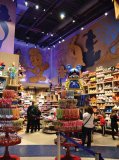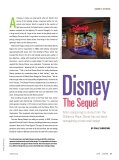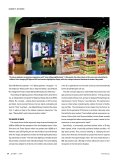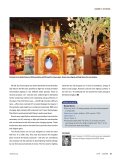



After reacquiring its stores from The Children's Place, Disney has set about reimagining a tired retail design
At Disney, it really is a small world, after all. Small in the sense of the lighting energy consumed within its individual retail stores. Small in regards to the number of light sources used. And small when it comes to the maintenance required for that lighting. On second thought, it's really a large world, after all. Large in the sense of the global reach of the Disney Store portfolio. Large when it comes to the predicted energy savings across those stores. And large in the context of lighting's impact on the Disney brand.
That brand image, at least as it's manifested in the Disney Stores, began the road to rejuvenation in 2008, when Disney reacquired approximately 220 stores from The Children's Place, which had licensed the chain in the U.S, and Canada several years earlier. A key objective—along with boosting the financial performance of the stores—was to refresh a creaky design. To inject some much-needed life, Disney Stores now emphasize "immersive and interactive experiences," allowing kids, for example, to build their own custom toys. "This is the first Disney Store that really showcases Disney products by connecting them to their stories," says Jon Endicott, director of Global Store Design for Disney Store. "We do that through what we call ‘storytelling neighborhoods," anchored by ‘hero' fixtures. The Disney Princess neighborhood is anchored by a princess castle with an interactive magic mirror. If Carsis your thing, then there's a super-scale Cars case filled with car parts where guests can design and put together their own car right there in the store. It lets guests interact with Disney stories."
[…]